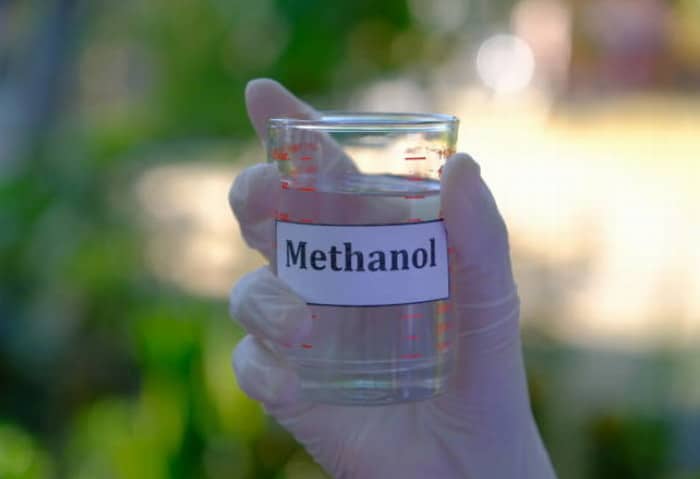Advantages and Disadvantages of Methanol

Methanol, a simple alcohol with countless industrial applications, is gaining increased attention as a potential solution to our evolving energy needs. This versatile compound has both advantages and disadvantages that make it a noteworthy player in the transition to cleaner, more sustainable energy sources. In this article, we’ll delve into the various pros and cons of methanol in our ever-changing energy landscape. Let’s see what are the advantages and disadvantages of methanol.
Advantages of Methanol
Being a alternative fuel that offers a cleaner source of energy compared to fossil fuels, methanol has more advantages than disadvantages.
1. Reduced Greenhouse Gas Emissions
Methanol has the potential to reduce greenhouse gas emissions when produced from renewable sources. It can be synthesized by capturing carbon dioxide (CO2) from industrial processes and combining it with hydrogen generated using clean energy. This sustainable approach mitigates climate change by recycling CO2 and using it as a feedstock.
2. Clean-Burning Fuel
When used as a fuel, methanol burns cleaner than traditional fossil fuels, emitting fewer harmful pollutants like sulfur and nitrogen oxides. This makes it an attractive option for improving air quality, particularly in urban areas prone to smog and respiratory issues.
3. Efficient Energy Carrier
Methanol is an efficient carrier of hydrogen, which is crucial for the hydrogen economy. It can be used to store and transport hydrogen, which is difficult to manage in its gaseous form due to low energy density and storage challenges.
4. Versatile Industrial Applications
Methanol serves as a feedstock in various industrial processes, such as chemical manufacturing, producing adhesives, plastics, and pharmaceuticals. Its versatility and importance in various industries contribute to its relevance.
Disadvantages of Methanol
Like any other source of energy (clean or fossil), methanol also has a few disadvantages.

Methanol has the potential to reduce greenhouse gas emissions when produced from renewable sources, image source: Unsplash
1. Toxicity
Methanol is highly toxic to humans when ingested, inhaled, or absorbed through the skin. Handling and storage require strict safety measures, making it a challenge in certain applications, especially as a transportation fuel.
2. Limited Infrastructure
The infrastructure for methanol production, storage, and distribution as a transportation fuel is less developed compared to conventional fuels like gasoline or diesel. Expanding this infrastructure requires significant investment and coordination.
3. Competition for Feedstock
Methanol’s use as a fuel competes with its use in the chemical industry. Balancing these applications while ensuring an adequate supply can be challenging.
4. Energy-Intensive Production
The production of methanol, particularly from renewable sources, can be energy-intensive. The energy required for hydrogen production, carbon capture, and methanol synthesis must be sourced sustainably to maximize environmental benefits.
Methanol and Renewable Energy
One of the most compelling aspects of methanol is its potential to integrate with renewable energy sources. As we seek cleaner and more sustainable energy solutions, the ability to store and transport energy becomes paramount. Methanol can play a pivotal role in this transition.
1. Energy Storage
Methanol’s energy density makes it a practical medium for energy storage. When produced using renewable energy, such as solar or wind power, it can store excess energy generated during peak periods and release it when demand is high. This addresses the intermittency issue associated with renewables and contributes to grid stability.
2. Hydrogen Carrier
Hydrogen is often considered a clean and efficient energy carrier, but its gaseous form presents challenges for storage and distribution. Methanol can effectively carry hydrogen, making it more accessible and easier to handle. This characteristic facilitates the growth of the hydrogen economy, with applications in fuel cells and transportation.
Challenges to Overcome
While the advantages of methanol are promising, there are several challenges that must be addressed to fully realize its potential in the energy landscape.
1. Safety Protocols
The toxicity of methanol demands stringent safety protocols in its production, transportation, and use. Ensuring that safety standards are met is essential to prevent accidents and health risks.
2. Infrastructure Development
The infrastructure for methanol production, distribution, and utilization, particularly as a transportation fuel, requires significant development. Investment in refueling stations and distribution networks is necessary to support its widespread adoption.
3. Resource Competition
As the demand for methanol increases in various sectors, there may be competition for feedstock resources, potentially affecting its availability and cost.
4. Energy Efficiency
To maximize the environmental benefits of methanol, the energy used in its production must come from sustainable and renewable sources. Achieving high energy efficiency in methanol synthesis processes is crucial.
In a rapidly changing energy landscape, methanol offers a unique set of advantages that align with our growing focus on sustainability and reducing greenhouse gas emissions. However, overcoming the associated challenges, particularly in safety, infrastructure, and resource management, is essential to unlock its full potential.
As we continue to explore innovative energy solutions, methanol remains a compelling candidate in the transition towards cleaner and more sustainable energy systems. Its ability to store energy, carry hydrogen, and serve as a versatile industrial feedstock positions it as a valuable player in the evolving energy landscape. Balancing its advantages and challenges will be instrumental in harnessing the benefits of methanol in our pursuit of a more sustainable future.

Methanol production facility, image source: Unsplash
The Future of Methanol
As the world seeks to transition to more sustainable and environmentally friendly energy solutions, methanol holds promise as an important player in this transformation. Its unique combination of energy density, versatility, and compatibility with renewable sources positions it as a viable option for addressing the challenges of energy storage, transportation, and industrial processes. However, addressing safety concerns, building the necessary infrastructure, and ensuring the sustainability of feedstock sources are vital steps in realizing the full potential of methanol in our energy landscape.
In conclusion, methanol is a multifaceted compound with advantages and disadvantages that are heavily dependent on its applications. Its use as an energy carrier and chemical feedstock offers significant benefits, especially when produced using renewable resources. However, safety, infrastructure development, and sustainability concerns must be carefully managed to harness the full potential of methanol in a more sustainable and cleaner energy future. The journey towards a methanol-based economy is marked by both challenges and opportunities, making it a fascinating aspect of our evolving energy landscape.
Conclusion
In conclusion, methanol presents a promising set of advantages, from reducing greenhouse gas emissions to serving as a clean-burning fuel and an efficient carrier of hydrogen. However, its toxicity and safety requirements, limited infrastructure, competition with other applications, and energy-intensive production pose challenges. As renewable energy sources become more widespread and efficient, methanol’s role in a sustainable energy future may become increasingly significant. Balancing its advantages and disadvantages will be key in harnessing its potential.







